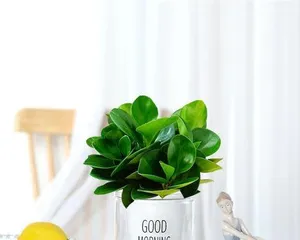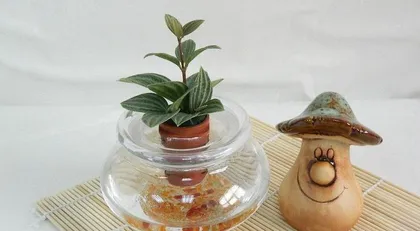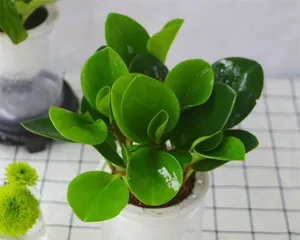Hydroponics is an emerging plant care method that is more convenient, environmentally friendly, and aesthetically pleasing compared to traditional soil-based methods. Pilea peperomioides is a popular indoor plant, and when combined with hydroponics, it can create stylish home potted plants. So, how should we care for hydroponic Pilea peperomioides?

Select a Healthy Pilea peperomioides Plant
Before caring for hydroponic Pilea peperomioides, you first need to select a healthy plant. This can be judged by observing the color, shape, and texture of the leaves, as well as the condition of the roots.
Choose a Suitable Container for Hydroponics
When choosing a container, ensure it has good air permeability and is leak-proof. The size should also match the plant to facilitate its growth and root development.

Prepare the Nutrient Solution
To prepare the nutrient solution, you need to purchase fertilizer suitable for Pilea peperomioides growth. Mix it in the correct proportion with an appropriate amount of water and stir well.
Change the Nutrient Solution
Hydroponic plants need a continuous supply of nutrient solution during their growth cycle; generally, the solution should be changed at least once a week.
Proper Lighting
Pilea peperomioides prefers scattered light and should be placed in a bright indoor location away from direct sunlight. Avoid direct sun exposure and excessive darkness.

Appropriate Temperature and Humidity
Pilea peperomioides likes a warm environment, with an ideal temperature between 20°C and 25°C, and the air humidity should be maintained between 50% and 70%.
Ensure Ventilation and Cleanliness
Hydroponic plants require a well-ventilated environment; you can open a window for air circulation daily. It's important to clean the container and leaves regularly to keep the plant healthy.
Avoid Overly Concentrated Nutrient Solution
A nutrient solution that is too concentrated can harm the plant. Therefore, when making the solution, add fertilizer in the correct proportion and avoid using too much.
Prune Promptly
Pilea peperomioides requires regular pruning of leaves and branches to control the plant's growth and shape, and to prevent it from affecting the plant's health and aesthetics.
Supplement Nutrients for the Plant on a Schedule
From time to time, it is necessary to supplement the hydroponic Pilea peperomioides with appropriate nutrients to maintain its growth and health.
Pay Attention to Pest and Disease Control
Hydroponic plants are susceptible to pests and diseases, so it is necessary to inspect the plant regularly and take corresponding preventive and control measures.
Pay Attention to the Plant's Reactions
The Pilea peperomioides plant will reflect its health condition through leaf color, growth rate, etc. Pay attention to the plant's reactions and adjust the care methods in a timely manner.
Transplanting Hydroponic Pilea peperomioides
When the hydroponic Pilea peperomioides grows too large or the roots become too dense, it needs to be transplanted, and the nutrient solution and container should be replaced.
Fertilize on a Schedule
Hydroponic Pilea peperomioides needs regular fertilization to ensure it gets the nutrients required for growth and development.
By following the above care methods, we can create healthy and aesthetically pleasing hydroponic Pilea peperomioides potted plants. In practice, we also need to continuously gain experience to better care for the plants and create a more beautiful home environment.